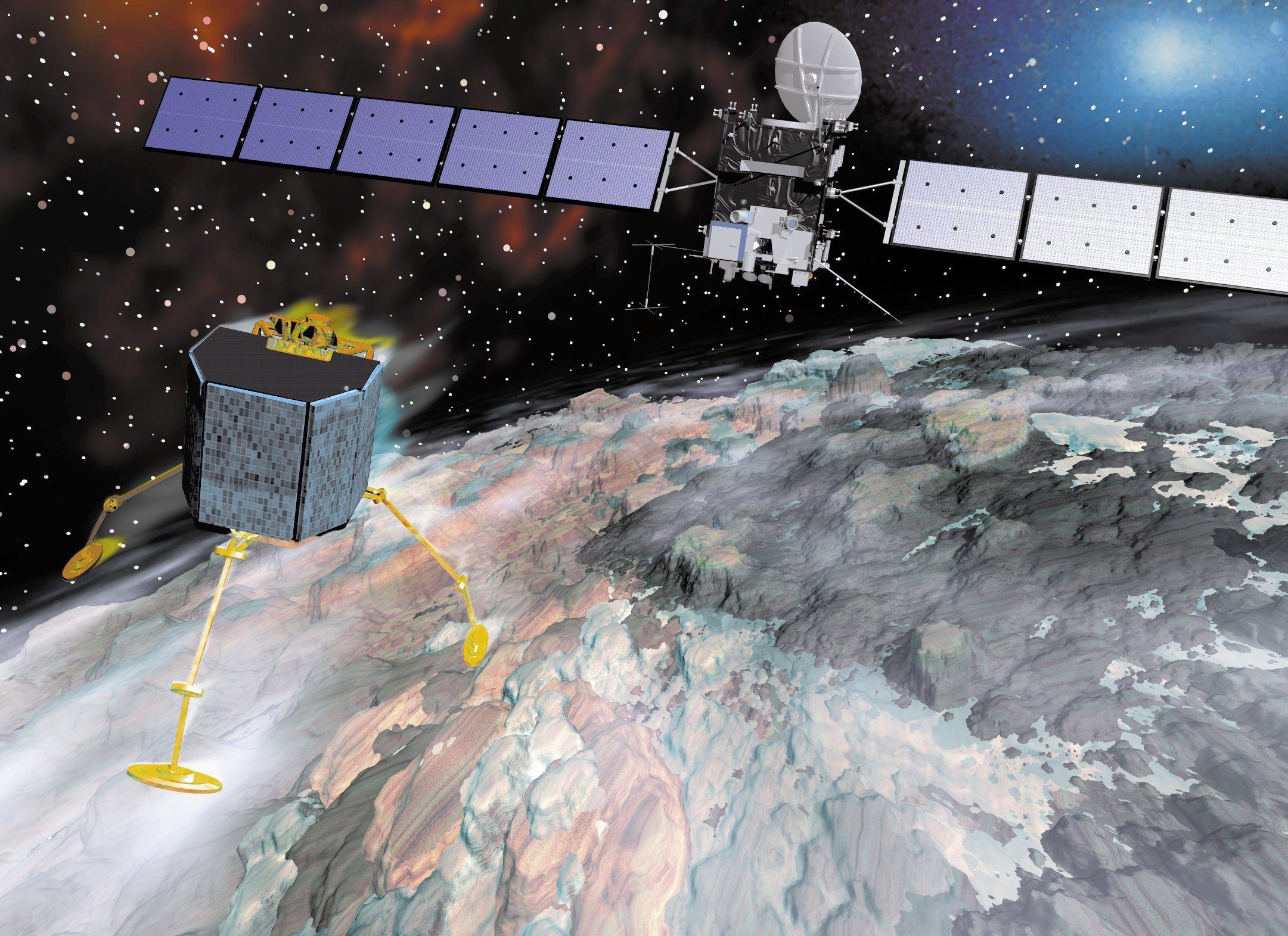SUMMARY
This is AI generated summarization, which may have errors. For context, always refer to the full article.

PARIS, France (UPDATED) – Europe’s trailblazing spacecraft Rosetta has resumed its exploration of a comet hurtling through the Solar System after a “dramatic weekend” in which contact with Earth was lost for nearly 24 hours, mission control said Thursday, June 2.
The orbiter’s navigation system, which works by tracking the position of stars, likely became confused after mistaking dust particles near the comet surface for faraway heavenly bodies, the European Space Agency (ESA) said.
“We lost contact with the spacecraft on Saturday evening for nearly 24 hours,” mission manager Patrick Martin said on the agency’s Rosetta blog.
In orbit around comet 67P/Churyumov-Gerasimenko, Rosetta is now some 428 million kilometers (266 million miles) from Earth and 468 million km (291 miles) from the Sun – somewhere between the orbits of Mars and Jupiter – traveling at a speed of 17.65 km per second (10.96 m/s).
“Preliminary analysis by our flight dynamics team suggests that the star trackers locked onto a false star,” said Martin, as Rosetta descended to within 5 kilometers (3.1 miles) of the frozen space rock blasting out jets of icy dust.
The spacecraft, perhaps best known as the mothership of surface probe Philae, entered “safe mode” as communication with Earth was severed, and switched off its science instruments, including cameras, radar, and chemical gas analyzers.
Ground controllers sent “blind” commands to the orbiter, without knowing at first whether they were received or executed, to realign the star trackers which were subject to a similar dust-related mishap in April 2015.
“It was an extremely dramatic weekend,” said spacecraft operations manager Sylvain Lodiot.
Contact was reestablished by Monday, May 30, and the spacecraft’s location pinpointed, which allowed flight manoeuvers to be performed to move it away from the comet, into a 30 km orbit.
“I confirm the spacecraft status is back to normal mode, with instruments back in science operations,” Martin told AFP on Thursday.
Final resting place
Rosetta, with Philae riding piggyback, arrived at 67P in August 2014 after a 10-year, 6.5-billion kilometer journey from Earth.
In November that year, it sent down Philae, a 100-kilogram (220-pound) lab equipped with 10 instruments for comet sniffing and prodding.
After bouncing several times, the robot lab ended in a ditch shadowed from the Sun’s battery-replenishing rays. But it managed to run about 60 hours of experiments and send home reams of valuable data before running out of energy and entering standby mode.
As 67P neared the Sun on its elongated orbit, Philae emerged from hibernation in June 2015 and sent a two-minute message to Earth via its mothership.
The lander went permanently silent in July 2015 after 8 intermittent communications with Earth.
The 1.3-billion-euro ($1.45-billion) mission was conceived to unravel the secrets of comets, believed to be time capsules from the birth of the Solar System.
It is meant to wind down in September, reuniting Rosetta with Philae on the surface of 67P.
The weekend’s events served as “a stark reminder of the dangers associated with flying close to the comet,” said the ESA blog.
“The last 6 weeks of the mission will be far more challenging for flight dynamics than deploying Philae to the surface was in November 2014, and it is always possible that we could get another safe mode when flying close to the comet like this,” explained Sylvain.
“However, the very final sequence where Rosetta makes a controlled impact on the surface of the comet should not be affected by such star tracker issues as we plan to take them out of the attitude and orbit control system loop.”
The provisional plan for laying Rosetta to rest, said the agency, was to place it on the smaller lobe of the rubber duck-shaped comet – near Philae’s targeted landing site dubbed Agilkia.
This will “most likely” happen on September 30. – Mariëtte Le Roux, AFP / Rappler.com
Add a comment
How does this make you feel?
There are no comments yet. Add your comment to start the conversation.